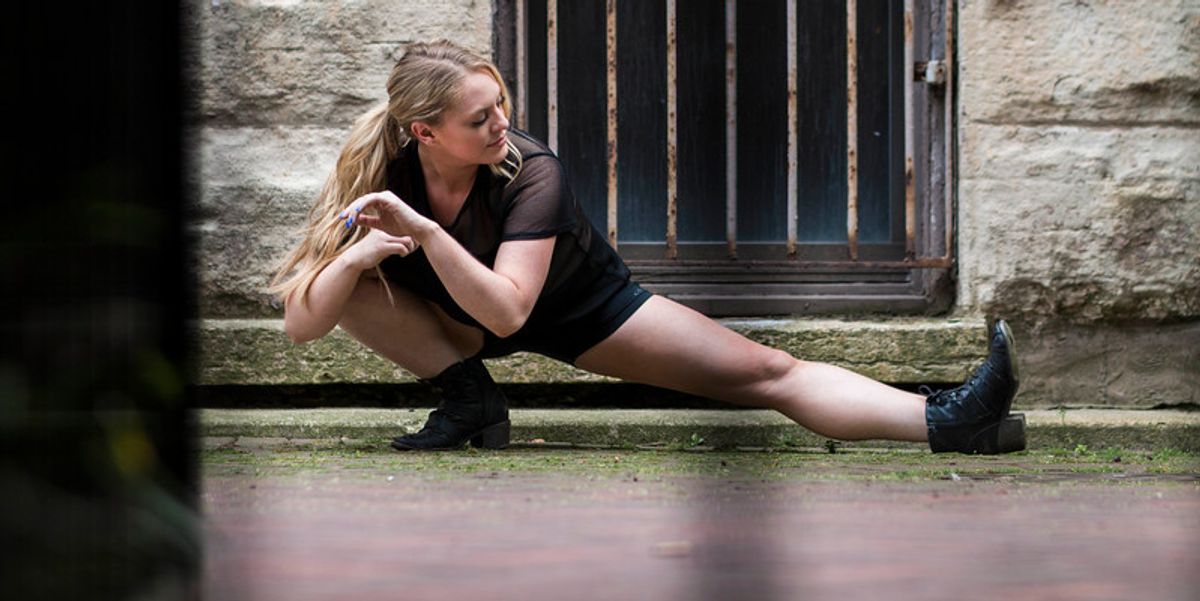The Pandemic Is Changing Dancers' Bodies and We Need to Honor That
During this pandemic, we dancers have not been living in our normal bodies. Even though we may not see a physical change, on the inside, our bodies have altered. Use me as an example: Before COVID-19, I was a 28-year-old healthy, active human being. But after my recovery, a 15-minute abdominal workout practically destroyed my hips, kidneys and my entire dance career.
In March, I tested positive for COVID-19. Thankfully, it was a mild case—I just lost my sense of smell and taste. However, after four months my sense of smell has yet to return, which greatly affects my diet and my energy levels. But, as a dancer, I’ve still wanted to keep exercising.
In June, I did a quick at-home 15-minute abdominal workout video. I could feel my hip flexors tighten up, but as most dancers do, I simply powered through. Twelve hours later, I felt an excruciating pain in both my hips. The following day I could not stand up straight or walk. Being the stubborn dancer that I am, I figured I had injured both hip flexors during my workout, and that rest, ice and stretching would be my medicine. Shockingly enough, 48 hours later I ended up in the emergency room, and was diagnosed with rhabdomyolysis.
Rhabdomyolysis (rhabdo for short) is a condition that occurs when a large amount of skeletal muscle gets damaged. Muscle fibers break down and release myoglobin (a protein storing oxygen in muscles) into your bloodstream. Heavy amounts of protein then begin to travel to your kidneys, which can lead to kidney damage or failure if not treated right away. Rhabdo is rare, with around 26,000 US cases per year, but it can be a life-threatening condition. It’s most common in athletes like marathon runners or cross-fitters who over-exert themselves during an extreme workout.
Rhabdo is not evident in the initial presentation of COVID-19, but some clinicians are discovering it may be a late-stage complication of this virus. In my case, I spent four days in the hospital having my kidneys flushed out. MRI results showed significant damage to my psoas, iliopsoas, iliacus and rectus femoris muscles.
Although, what has happened to me is an extreme and rare case, it can serve as a cautionary tale to urge all dancers to honor their changing bodies. Since being quarantined, most of us have not been at our usual activity levels, and we are underestimating how much our routines have changed. Staying mostly at home has caused dancers to be more sedentary, drastically halted our daily step count, and affected our diets, stress levels and mental health.
We once were in a constant state of multitasking, commuting and dancing—and now we are grappling with finding a sense of normalcy in a far more stationary life. Even in virtual dance classes, we lack the freedom of dancing in a large, open space; being able to travel across the floor; and the simple luxury of moving from right to left or even upstage to downstage. Now, kitchen countertops function as barres, jumping is perilous, and floorwork is far more constricted.
As dancers, we are capable of doing pretty much anything we set our minds to, but remember that times have changed, and so have we. Rhabdo will be unlikely for most, but it is potentially dangerous for those who have had COVID-19. Regardless, everyone should be mindful, because other injuries can easily occur.
As a community, we need to work on rebuilding strength in a safe manner, not simply picking up where we left off. Whether you are a student or a professional, it is your responsibility to do what is best for your own body. Try not to feel pressured to perform at a high level—your body may not be ready. This is not a time to compare, be stubborn or jump back in full force, but rather a time to listen to your body, modify and execute sensible strength training. Do not forget to be gentle with yourself —honor and respect your limitations, and enjoy the gift of moving.




